
Finding the Gold in the Iron
Making the Inner Marriage
Lori Green, July 11, 2018

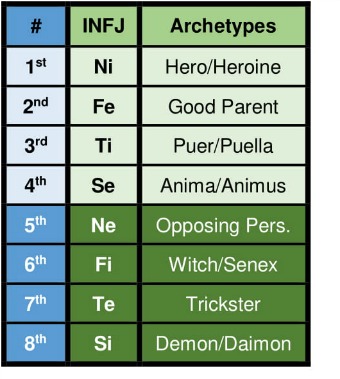
The Caged Panther
In discovering the potential of my inferior function, extraverted sensation (Se), I began to strengthen my animus. After the cat dream, my wounded animus showed up again in the form of another magnificent cat: a caged panther. Deep in graduate studies, I read the poem by Rainer Maria Rilke titled “The Panther: In the Jardin des Plantes, Paris”:
The passing of the bars fatigues his gaze
so much, that it can hold no more.
To him, it is as if each bar were a maze
that led to another, and another barred door.
The quiet pacing of strong and supple limbs
that turn around the very smallest sphere
is like a dance of power around the rims
of circles, that hold a great will numb in there. (Rilke, as cited in Polikoff, p. 310)

I was both transfixed and oddly comforted to learn that the great Rilke had endured a similar darkness. Poet and translator Daniel Joseph Polikoff (2011) portrayed a time when Rilke was creatively frozen, disillusioned with the manner in which he had thus far approached his art. A fortunate mentoring by sculptor Auguste Rodin assisted the mercurial Rilke as he embraced an entirely new movement in his work: honoring the dignity of the object. The highly sensate Rodin challenged Rilke to go to the Jardin des Plantes and intensely observe the animals, the “thing” itself. The result was “The Panther”—and an entirely new phase of Rilke’s poetry. While I cannot speak to Rilke’s psychological type, in connecting with the foreign nature of my own Se inferior function, I sensed the tremendous value in this exercise.
What seized me the first time I read “The Panther” was, ironically, not the aching, caged containment but the life pacing to break free, the wild current in the spaces between the bars, the electricity beginning to spark deep within my own being:
Only seldom does the pupil’s curtain slide
Soundlessly up—. Then an image enters,
ripples through the tensely stilled stride
and ceases where the rhythm centers. (Rilke, as cited in Polikoff, p. 310)
I wanted to scream a guttural war cry. It was time to know the agency that had been quietly gathering, and it became increasingly clear I would need the otherworldly assistance of my inferior Se to do so.
It seemed the perfect storm was brewing. My awakening animus and my underdeveloped Se were in need of guidance. As synchronicity would have it, I picked up a copy of storyteller and poet Robert Bly’s Iron John: A Book About Men (1990/2004). Though I had read it years before, the folktale’s wisdom leapt off the page anew, feeding a wary, yet hungry sojourner, my neglected animus. In immersing myself in the story of “Iron John,” I discovered that a man needs to both seek his feminine side and form a connection with his wild nature. “Iron John” speaks to the latter. I realized that the folktale held a similar message for me: I was a woman on such a mission. In addressing the classical Jungian definition of animus, analyst and author Clarissa Pinkola Estes (1995) revealed that “the revivifying source in women is not masculine and alien to her, but feminine and familiar” (p. 310), but she nevertheless believes the animus concept to have import. Estes said,
Animus can best be understood as a force that assists women in acting in their own behalf in the outer world. Animus helps a woman put forth her specific and feminine inner thoughts and feelings in concrete ways—emotionally, sexually, financially, creatively, and otherwise—rather than in a construct that patterns itself after a culturally imposed standard of masculine development in any given culture. (p. 310)
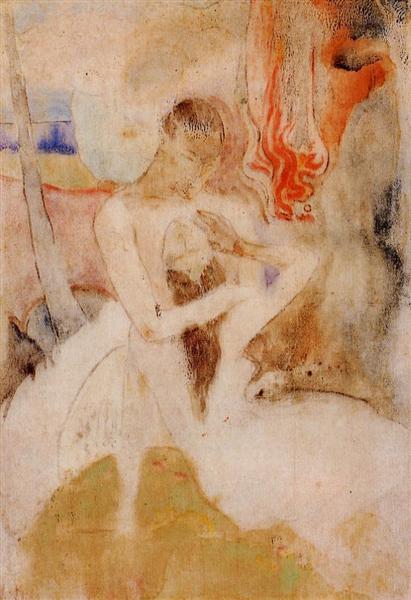
As I read Bly’s exploration of eight distinct phases of the masculine journey, I readily came to see the stark contrast between the animus models I had historically experienced and the vibrant, engaged animus that could be. And as I continued to digest this remarkable tale, three salient points struck close to home: reclaiming the golden ball, tending the wild garden, and establishing inner sovereignty. As the young boy matured in the story of Iron John, so did my growing animus sensibility.
There was, once upon a time, a King, who had near his castle an enormous forest, in which wild animals of all sorts lived. One day he dispatched a hunter into those woods to take a deer, but the hunter did not return. “Something went wrong out there,” said the King. (“Iron John” cited by Bly, p. 250)
Reclaiming the Golden Ball: The Audacity of Play
From the outset the tale points to the untamed part of the interior life. The king keeps losing hunters in a remote area. Even he is at a loss about how to proceed—until an intrepid young man arrives saying that this is just the sort of adventure he seeks. The man loses his dog to the cause but discovers a wild, hairy man living at the bottom of a lake. After a posse of men drain the lake and capture the savage now referred to as Iron John, the king’s curious eight-year-old son, playing in the palace courtyard, loses his golden ball as it rolls into Iron John’s cage. A conversation begins, and two things are certain: the ball will only be returned when Iron John is set free, and the key to his cage has been deposited under the queen’s pillow. Bly (1990/2004) referenced Jung as saying the psyche likes to make deals. He added, “Conversing with the Wild Man is not talking about bliss or mind or spirit or ‘higher consciousness,’ but about something wet, dark, and low—what James Hillman would call ‘soul’” (p. 9). There comes a time when one has to gather the enterprise to strike out on one’s own, free of the niceties of acculturated parenting, or in regard to type development, the preferred functions.
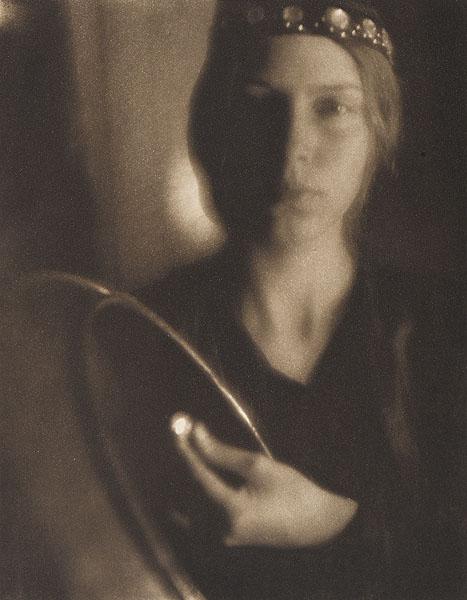
Illustrative of my determination to work my extraverted sensory muscle and revel in pleasure, four years ago at Christmas I ran off to Ireland to marry my second husband, with only my children in tow. My family of origin felt betrayed. During my divorce I had needed their support, and I think they grew accustomed to having me “in the fold” once again. Moreover, my fiancé felt foreign to my rural Wyoming folks. He had backpacked a year in Europe, regularly shouted “Hey, Freaky!” in lieu of “hello,” and proudly declared himself an artist. Marrying abroad was not about my parents, and I felt I had done my part by inviting them to the wedding. Rather, I needed to reclaim my privacy and establish my new family, and neither my husband nor I had ever been to Ireland. Indeed, our intention for launching our life together was to boldly embrace new territory. Entering the Se atmosphere of sensory wonder—amber rays piercing the ancient, black chamber of Newgrange on the Winter Solstice, rosy-cheeked carolers on cobble-stoned Grafton Street, pelting December rain, dark molasses plum pudding—I felt positively victorious. Reclaiming my golden ball fed my imagination. And with my free-spirited spouse leading by example, I began to open up, referring to baristas and other such occasional “strangers” by name, spending over an hour savoring a meal, and playing Mexican train dominoes with my daughter. Ireland was essential to my well being and to my awakening animus that was now in the business of negotiating the choices of a life well-lived for me.
Tending the Wild Garden: The Writer’s Life
The boy, who really did want his ball back, threw caution to the winds, went into the castle and got the key. The cage door was not easy to open and the boy pinched his finger. When the door stood open, the Wild Man walked through it, gave the boy the golden ball, and hurried away. The boy suddenly felt great fear. He shouted and cried out after him, “Wild Man, if you go away, they will beat me!” The Wild Man wheeled around, lifted the boy onto his shoulders, and walked with brisk steps into the forest. (“Iron John,” as cited in Bly, p. 251)
Regarding touchiness and wounding, Marie-Louise von Franz (1971/2006) said, “The inferior function and the sore spot are absolutely connected” (p. 15). The synergy created as a result of the innocent and wild parts of the psyche joining forces is pivotal. In type terminology, both the promise and the unknowns of the fourth function have declared themselves. Even in all the confusion, and while the boy might not be consciously aware of the psychological shift, the wound inflicted by the escape is far less dangerous to the boy at this juncture than his remaining with his parents. Iron John, the wild psyche, has both communicated with and kept his promise to the boy; the lad has suddenly questioned the shelter of the known, and the choice to discover the unknown is made. Iron John tells the boy that though he will never see his mother and father again, he, Iron John, will watch over him and he has more treasure than anyone else in the world.
While one does not disregard the other functions when the inferior position awakens, the center of gravity nonetheless shifts. Von Franz (1971/2006) put it this way: “The inferior function is the ever-bleeding wound of the conscious personality, but through it the unconscious can always come in and so enlarge consciousness and bring forth a new attitude” (p. 68). The boy’s world is thoroughly remade. He is growing in agency. Not only has he gone against civilized influences and stolen the key but he has also struck out for wild territory, leaving both parents behind. The psyche requires boldness at times, and Bly (1990/2004) summed it up best when he said, “If a son can’t steal [the key], he doesn’t deserve it” (p. 12). But stealing from the family of origin is often a fraught occasion. Reflecting on the original wound of my own upbringing, I know for certain that re-visioning an empowered view of anger as an agent for relatedness and change is essential. With Fe in my auxiliary position, I rarely present as an angry person, but I feel anger’s raw energy and accept that I have not given voice often enough to its appropriate expression.
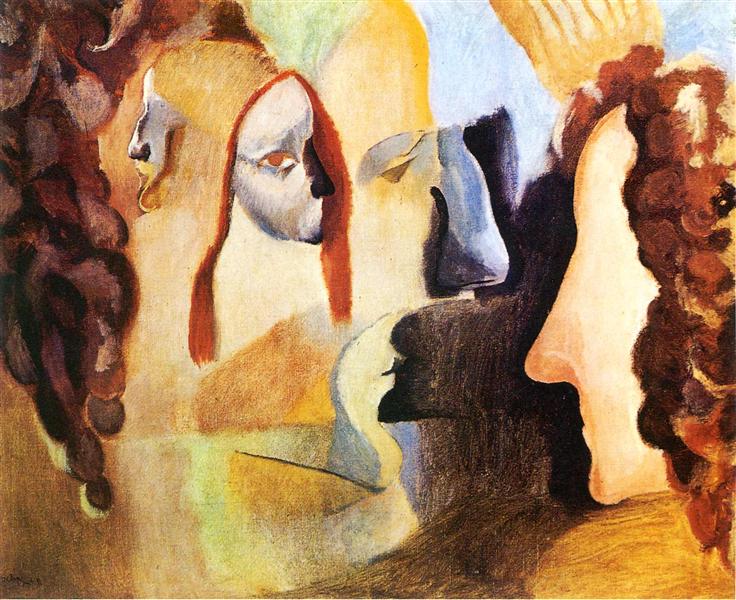
This early model of animus lodged itself deep within my psyche, coloring my actions and reactions for years. Predominantly, I could tell that my dad was uncomfortable with the energy that cursing signaled: How could kind little Lori have another side? We like her better the other way. But I also internalized that it was not okay to crack the façade of the respectable family. Both of my parents had risen from poverty, and our family was to look and behave differently: We were always to appear happy. I grew to despise the fakeness of this setup, but I had to keep my emotion under wraps.
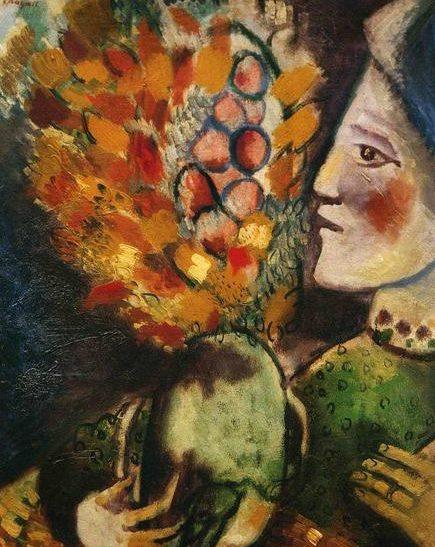
It takes a while to get skillful with anger, and if one is never allowed to express it, the dark trickster nature is one option for its release. I look now with overdue compassion at my “choice” in a first husband. Perhaps it wasn’t a choice at all. Perhaps I had to marry a man about to explode, a man who would unleash wreckage and public humiliation so I could start to understand the hidden value in chaos. In a sense, my original wound drove me deeper into a situation that would ultimately demand I confront my first husband’s betrayal, which was my second, profound wound. I was strong enough to face it by then, and without a doubt this dark face of the trickster continues to evolve.
Realizing I have a choice in how I wield my anger is liberating. My animus is a good guide. He is teaching me the wisdom of giving creative expression to anger first and when the occasion calls for it, speaking directly and without apology. Archetypal psychologist Keiron LeGrice (2016) illuminated the conscious animus when he stated,
A developed animus is only possible after one has made conscious and critically examined the ideas, beliefs, and opinions by which one lives and which one espouses and unconsciously entertains. When the animus is consciously differentiated from the ego, it can function as a principle of creativity and critical authority, fostering an independence of spirit and strength of ideas. (p. 56)
Ironically, my relationship with my dad is better for the “old king” energy being dead. My difficult trickster has emerged as wickedly funny numerous times. My dad and I laugh. I use swear words (worse than “damn”), and we laugh some more. My dad rarely curses; he still finds it uncomfortable. But he almost seems proud that I can and do.
Like the young man in the tale, I learned to trust my own wildness. By uniting the preferences of my dominant Ni with the growing capacity of my Se, my approach to my writing career began to honor my own pace and style. For instance, I like to work earlier in the day, with good strong coffee, and then let my intuition take over the writing as I tend to my family and home. In particular, my Ni works keenly during sleep. My husband is precisely the opposite. Both his vocation and his art require him to work with his hands, an Se trait I greatly admire, and he much prefers to follow his inspiration into the night. The point is, in maturity, after much weeding and tending to wild shoots, one eventually finds one’s way and enjoys the nature of it, allowing others to do the same.
Establishing Sovereignty: Finding the Warrior Within
“You will receive that, and more than you have asked for as well.”
The Wild Man turned then and went back into the woods, and not long afterwards, a stableboy came out of the trees leading a war-horse that blew air through its nostrils and was not easy to hold in. Running along after the horse came a large band of warriors, entirely clothed in iron, with their swords shining in the sun. … The boy and his iron band rode there at full speed, galloped on the enemy like a hurricane, and struck down every one that opposed them. (“Iron John,” as cited in Bly, p. 256)
The young man has reached the moment when his warrior nature awakens. War has come to the land, but when he requests a horse in order to join the impending battle, he is laughed off by the other men and given a lame nag. Yet he will not be deterred. The young man is now self-possessed enough to ask something of life, to call out to Iron John for help. Psychologically, not only is the young man in the folktale in a time with no father, but he is also coming in to a relationship with a new king. Bly (1990/2004) referred to this as a shift from the earthly father to finding one’s inner sovereignty: “The process of bringing the inner King back to life, when looked at inwardly, begins with attention to tiny desires—catching hints of what one really likes” (p. 112). “Tiny desires” ultimately lead to the discovery of a phoenix rising.
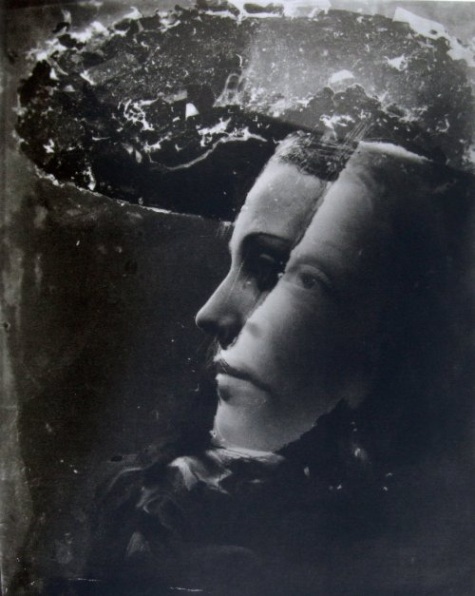
Shumate (2017) described a person in command of a healthy extraverted thinking (Te) function as one who “may assume a can-do attitude that makes difficult tasks seem feasible” (p. 18). Te occupies my trickster position, but whereas I once relied on subterfuge to achieve an end, I am changing this weaker pattern through conscious engagement with my animus. As I demonstrated to my son, Te in the trickster position can also “replace old rules with new ones and persuade others to comply” (Shumate, p. 20). The war horse is a vibrant example of what an evolved trickster can produce, what an awakened, battle-savvy animus can accomplish. According to Shumate (2017), Beebe has proposed that the inferior function can only be integrated if we have first accessed the trickster function (p. 39). When I became aware of my trickster capacity, my Te and Se joined forces with each other and the outcome was not only an exhilarating departure from my comfort zone but also a strategic strike from the psyche’s wisdom.
The emergence of play and creativity in my life, as well as the reclaiming of appropriate anger, has greatly assisted me in getting out of my own way. In the words of analyst and author Marion Woodman (1998),
We must first awaken to our needs, feelings and values. Then the masculine can grow up and say: I shall stand up for these needs, these feelings, these values. I shall put them out there in the world, I shall work with you in all your creativity. (p. 154)

At present, Sly, my three-year-old cat nudges against my hip. My children brought Sly and his brother Cola home as orphaned kittens. Being a dog person until the cats’ arrival, I find them to be funny and unexpected. Cola is the silvery color of the severed cat in my long-ago dream, and Sly is, both in spirit and color, a miniature black panther, decidedly uncaged. Beebe (2004) referenced the developed superior and inferior functions as establishing a “spine of consciousness” (p. 92). The psyche not only revealed my once severed condition but also the means by which I could re-fuse: discerning, deciding, and reclaiming on my own terms. Beebe (n.d.) once explained his spine metaphor in an interview with author James Arraj:
This definition of the spine is a very real thing. … That sense of self we all have is along that mysterious axis between what we are best at and what we are worst at, which is the spine of our personality, and there is our uprightness, there is our integrity. Another way of saying this metaphorically and analogically is that a personality needs to drop anchor.
I marvel at the daily reminders I have in the wiry playfulness displayed by Cola and Sly. But the most moving realization is the knowing that while I seek the inner marriage, it is also seeking me.
References
Beebe, J. (2004). Understanding consciousness through the theory of psychological types. In J. Cambray & L. Carter (Eds.), Analytical psychology: Contemporary perspectives in Jungian analysis (pp. 83-115). Hove, UK: Brunner-Routledge.
Beebe, J. (n.d.). A Jungian analyst talks about psychological types (James Arraj, Interviewer) [Audio file]. Retrieved from http://www.innerexplorations.com/catpsy/a.htm
Bly, R. (2004). Iron John: A book about men (2nd ed.). Cambridge: De Capo Press. (Original work published 1990)
Estes, C.P. (1995). Women who run with the wolves: Myths and stories of the wild woman archetype. New York: Ballantine Books.
Keen, S. (1991). Fire in the belly: On being a man. New York: Bantam Books.
LeGrice, K. (2016). Archetypal reflections: Insights and ideas from Jungian psychology. New York: Muswell Hill Press.
Polikoff, D. J. (2011). In the image of Orpheus: Rilke—a soul history. Wilmette, IL: Chiron.
Shumate, C. (2017). The function-archetype decoder. Jung’s eightfold way (forthcoming). Adapted with permission from McAlpine, R., Shumate, C., Evers, A., & Hughey, D., The function-archetype decoder [software program], 2009; Louisville, KY: Type Resources.
von Franz, M.-L. (1995). Shadow and evil in fairy tales (2nd ed., Rev.). Boston: Shambhala.
von Franz, M.-L. (2006). The inferior function. In M.-L. von Franz & J. Hillman, Lectures on Jung’s typology (3rd ed.). Putnam, CT: Spring Publications, Inc. (Original work published in 1971).
Woodman, M., & Mellick, J. (1998). Coming home to myself: Daily reflections for a woman’s body and soul. Berkeley, CA: Conari Press.
Images
Chagall, M. (1910). Woman with a bouquet. Retrieved from wikiart.org
Duchamp, M. (1911). Yvonne and Magdalene torn in tatters. Retrieved from wikiart.org
Filonov, P. (1910). Heads. Retrieved from wikiart.org
Gauguin, P. (1893). Here we make love. Retrieved from wikiart.org
Kustodiev, B. (1918). The merchant’s wife at tea. Retrieved from wikiart.org
Maar, D. (1930). Double portrait. Retrieved from wikiart.org
Man Ray (1922). Rayograph (the kiss). Retrieved from wikiart.org
Seeley, G. (1907). Firefly. Retrieved from wikiart.org



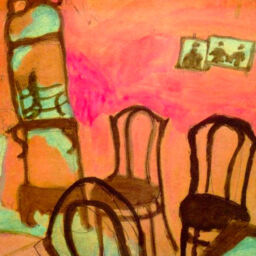
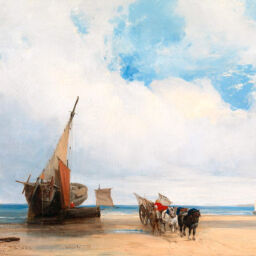
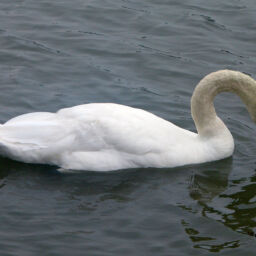
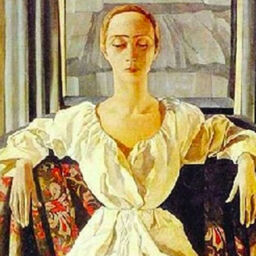


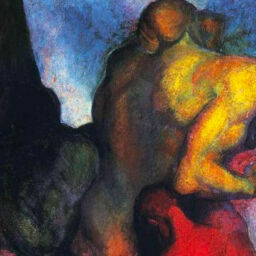

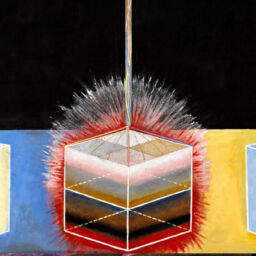




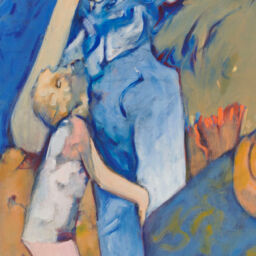
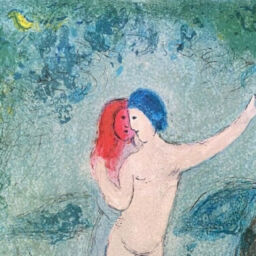
I had to read this deeply intellectual essay twice, Lori Green. It was so very engaging. I read and pondered then read again.
It takes a great deal of courage to live one’s own life but when we do, we actually have a life worth living.
Thanks for posting and sharing it.
Well done friend. Love it! <3
Wow. This is a deep and honest analysis. I so respect the work you’ve done to arrive at this point. What a treasure you are, and what a treasure you’ve shared.
Great insight of the journey of animus and the consequences as one reflects on what could have been. The unintended consequences are reflected as a gift in the journey of life. Well done.